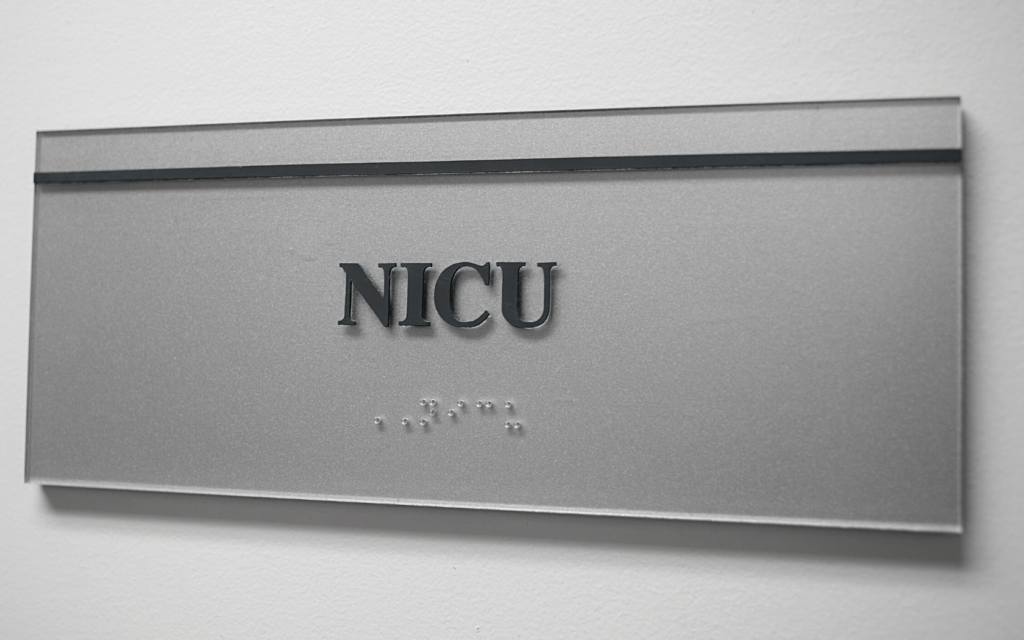Did you know HIE is one of the top birth injuries associated with medical malpractice? It’s awful to think that a trusted doctor could injure a baby with their negligent actions. But it happens.
They say that knowledge is power. But doctors probably won’t talk to you about HIE and other potential consequences of a delivery gone wrong. That can leave you feeling powerless, especially when your child receives an HIE diagnosis!
We’re here to empower you with vital information about this condition. We’ll also explain how it can stem from negligence. If you’d like to discuss your case with an attorney, please contact us here.
What is Hypoxic-ischemic encephalopathy (HIE)?
Hypoxic-ischemic encephalopathy (HIE) is a condition that affects the brain of newborns. It occurs when there’s a lack of oxygen (hypoxia) and reduced blood flow (ischemia) to the baby’s brain. This oxygen and blood shortage can cause a cascade of events that lead to brain injury(encephalopathy).
HIE usually happens during or shortly after birth. The damage can be mild, moderate, or severe. The severity of HIE depends on how much oxygen deprivation there is, and how long it continues.
How common is HIE?
According to Hope for HIE, about 2-3 full-term babies per 1000 have HIE. That’s about 1000 babies per year.
The Florida Neonatal Neurological Network says the rate is much higher for preterm babies (60% of live births).
What causes It
Various factors can cause HIE. The main causes are:
- Complications during pregnancy (like preeclampsia and infections)
- Problems with the umbilical cord (such as knots or compression)
- Placental issues (such as weak blood flow or excessive bleeding)
- Difficulties during labor and delivery (prolonged labor, abnormal fetal position, etc.)
Sometimes the cause of hypoxic-ischemic encephalopathy is unknown.
Signs and Symptoms
Symptoms of HIE include:
- Altered consciousness or lethargy
- Seizures
- Poor feeding or sucking reflex
- Weak or absent reflexes
- Abnormal muscle tone (stiff or floppy)
- Difficulty breathing or irregular breathing patterns
- Heart rate abnormalities
Doctors base an HIE diagnosis on clinical evaluation, medical history, and a physical examination. They may also order tests like an MRI (for brain imaging) or EEG (to monitor brain activity).
Complications from HIE
The long-term outcomes for infants with HIE can vary widely. While most children survive, a few with severe cases do not. Some may experience mild to severe complications, such as:
- Cognitive impairments
- Motor delays
- Epilepsy
- Hearing and vision problems
- Developmental delays
- Cerebral palsy.
Early intervention can help children with this condition avoid further complications. With rehabilitation and ongoing medical care, they can enjoy the best quality of life possible.

Is There a Cure for Hie?
When the brain doesn’t get enough oxygen, brain cells take a hit. Some die; others recover. Unfortunately, there’s no way to revive dead brain cells. That means there’s no cure for HIE.
So treatment for HIE focuses on supportive care. The goal is to maintain vital functions and prevent further brain injury.
One of the most promising HIE treatment options is therapeutic hypothermia. It’s also called cooling therapy. It involves lowering the baby’s body temperature to reduce brain inflammation and limit additional damage. But doctors only have a short window in which they can use this method. It only works for infants that are less than 6 hours old, or up to 24 hours in some cases.
Treatment Options
At the moment there aren’t any other brain-specific treatments available besides therapeutic hypothermia. So doctors use these treatment avenues to help support affected organs:
- Medication for seizures
- Respiratory support
- Medicine for controlling low blood pressure
- Medication to sustain kidney and liver function
- Physical therapy
- Behavioral and emotional therapy

How Negligence Can Lead to Injury
A doctor’s negligent actions (or inaction) can lead to HIE. This may come as a huge shock to the parents of a child with a brain injury. After all, they trusted their doctor to ensure safe delivery.
But mismanagement of pregnancy and delivery do happen on occasion. It might involve a scenario like one of these:
- Failure to monitor the fetal heartbeat. An abnormal heartbeat can be a sign of oxygen deprivation. The medical team could miss the warning signs, either because they don’t monitor the heartbeat, or don’t pay attention to it.
- Allowing labor to go on too long. Every time the uterus contracts, it compresses the placenta and umbilical cord. That’s where the baby gets oxygen. So prolonged labor has the potential to restrict a baby’s oxygen supply.
- Letting maternal infections go untreated. A mild infection may be no problem for a mother. But it can cause major issues for a fetus, including oxygen deprivation. If doctors don’t treat them, infections may spread to babies during labor and delivery.
- Inadequate prenatal care. Healthcare providers sometimes fail to identify or appropriately manage conditions that can increase the risk of HIE. Two examples of risk-increasing conditions are gestational diabetes and preeclampsia.
These aren’t the only ways that negligence can lead to HIE. Having worked with hundreds of birth injury cases, we know that every case is unique. You can view a sampling of our case results, some of which involved HIE, on this page.
If you suspect that negligence played a part in your child’s HIE diagnosis, call us. We’ll help you find out if you may be eligible for medical malpractice compensation.
Hypoxic Brain Injury at Birth FAQs
Life expectancy for people with a hypoxic brain injury varies. They can live for just a few hours, or have a long, “typical” lifespan. The reason for this is that these injuries can range from mild to severe. According to the Florida Neonatal Neurologic Network, 75% of infants with severe HIE die early in life or have a severe handicap. At the same time, most infants with a mild hypoxic brain injury survive. Only 5% have handicaps.
Yes, it’s possible to recover completely from a hypoxic brain injury if it’s mild. If a person receives swift treatment to correct the lack of oxygen, there’s a better chance they can recover.
On the other hand, it’s rare to see someone with a severe hypoxic brain injury make a full recovery. They will almost always suffer from a brain-related disorder. This is because the brain experiences significant injury after about 4-6 minutes without oxygen. If oxygen deprivation goes beyond this critical window, the damage becomes more severe and irreversible.
The cause of a hypoxic brain injury in babies is a lack of oxygen around the time of birth. This can result from complications like a compressed or prolapsed umbilical cord, maternal blood pressure issues, or problems with the placenta. Prolonged labor can also contribute to oxygen deprivation. Also, if a baby has certain medical conditions, like congenital heart defects or respiratory issues, there’s a greater risk of hypoxic brain injury.
Yes, excessive crying is one symptom of Hypoxic Ischemic Encephalopathy (HIE). But this doesn’t mean every baby that cries a lot has HIE. Also, crying isn’t the only symptom of HIE. You may observe irritability or excessive crying. But other signs like lethargy, poor feeding, seizures, and abnormal muscle tone may also be present.




